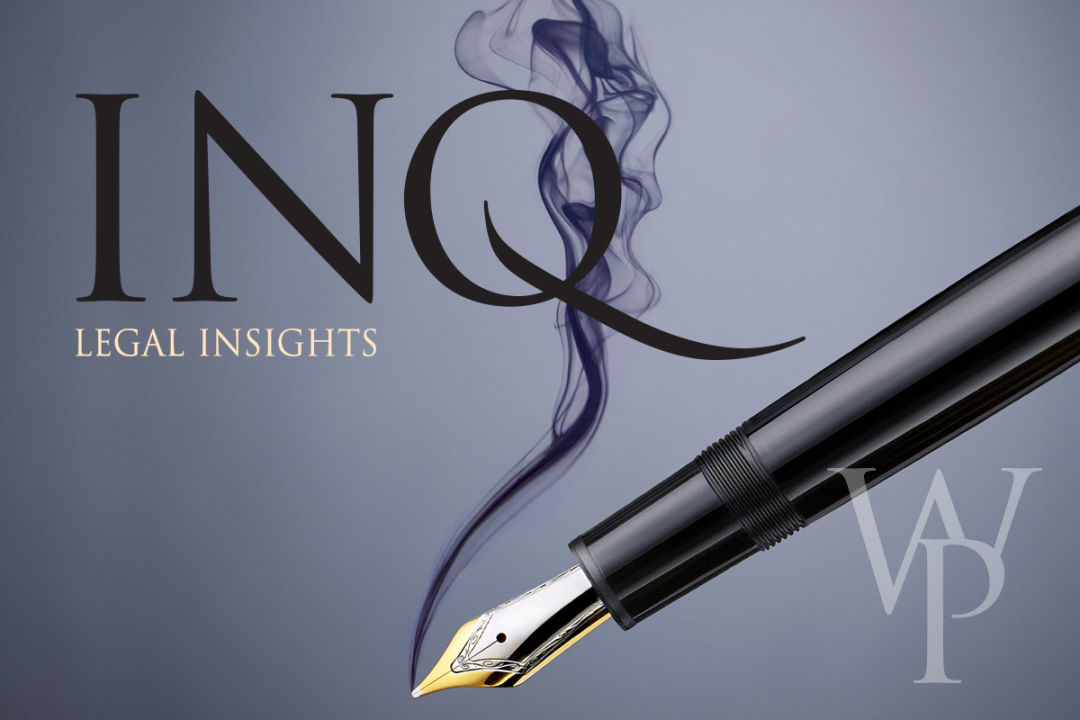What You Need to Know About International Intellectual Property Protection

International Intellectual Property Protection: What You Don’t Know Can Hurt You
One billion, two hundred and sixty-two million dollars. That is the amount at stake in a case involving intellectual property infringement abroad. There, Carnegie Mellon University sued Marvell Tech Group Ltd., alleging that Marvell’s computer chips infringed its patent. Although Carnegie Mellon’s rights are protected by a United States patent, an appellate court recently reduced Carnegie Mellon’s award of damages from $1.54 billion (the damages related to all computer chips sold by Marvell worldwide) to $278 million (the damages related only to those chips imported by Marvell into the United States), asking the lower court to conduct a new trial to determine whether any “sale” occurred in the US that would allow an award of damages under US law for chips that were manufactured abroad and that never entered the US. The major theme underlying this case is one of territoriality, the fundamental concept that a nation’s laws govern conduct only within its own borders.
This case is just one example of a nightmare that plays out frequently for numerous, unsuspecting US companies, even large, sophisticated entities like Carnegie Mellon. US companies expend large amounts of time, money, and energy creating their brands and products. And yet, even when these companies jump through all of the hoops necessary to protect their property under US intellectual property laws, they sometimes learn that their intellectual property rights do not extend past US borders and their rights against infringers in other countries are, essentially, nonexistent.
Protection of intellectual property is important for all businesses, not just technical or Internet companies and not just big-name brands. Every business has intellectual property that would benefit from protection. Traditionally, three primary types of intellectual property can be registered for protection in the United States: trademark, copyright, and patent. (Trade secret is often considered to be a fourth form of intellectual property, but this is not protected through any formal government registration: it is protected by keeping the process a secret.) Trademarks protect words, phrases, or designs associated with a brand or product. Trademark also includes within it “trade dress,” which protects the look or packaging of a product. Copyrights apply to original works of authorship, such as literary, pictorial, musical, and dramatic works; and patents cover processes, machines, articles of manufacture, and compositions of matter. The US also provides protection under so-called “design patents” for the ornamental design of a functional item. These three types of intellectual property may overlap, providing multiple avenues for protection. For example, your business’s name is a trademark, but any logos used with the business’s name or brand could be protected by both trademark and copyright. And any products made or processes used by your business could be protected by a patent, trade dress, or copyright. Infringement of your rights in any of these properties could cause lost profits, loss of customers, and damage to your business’s reputation.
Recently there has been an increase in infringement across the world in all markets, including such small, everyday products as toothpaste, water filters, super glue, and contact lenses. With the rise of the Internet and the convergence of foreign markets, now, more than ever, think about protecting your intellectual property on a global scale. While obtaining protection in the US is a helpful first step, often, such as the Carnegie Mellon case, this will not provide the full protection that is necessary in foreign markets. If you are an owner of intellectual property that has been, or will be, placed in the stream of international commerce, keep two questions in mind: (1) Will US intellectual property laws adequately protect your property against infringement in foreign countries?; and (2) If not, what do you need to do to obtain international protection?
Protection of US Intellectual Property Internationally
US courts will generally enforce trademarks in international markets if the infringer is an American citizen or if the infringing acts have had a substantial effect on US commerce. A “substantial effect” could include evidence that American consumers have been confused by the foreign use of an infringing trademark and could be based on a website accessible from the US. For US copyrights and patents, however, US laws will protect only against infringement that occurs within the United States. This means that even if there is conduct abroad that would constitute infringement in the US, the US Copyright Act will not provide a remedy unless the conduct leads to some direct infringement within the US. Similarly, a US patent will only protect an American inventor from infringement that occurs within the US. The only arguably “foreign” conduct protected against is the importation into the US of infringing products and the exportation of a patented invention’s parts from the US to a foreign country for assembly.

Foreign Protection of Intellectual Property
While US intellectual property laws may provide limited protection against acts in foreign countries, if you or your company use intellectual property in foreign markets and anticipate that infringement of your property may not fall into one of the limited categories above, your business may seek stronger intellectual property protection under the laws of other countries and any treaties to which they are a party. If you desire stronger protection, here are just a few of the questions to remember when seeking intellectual property protection under foreign laws:
- Is my property something that is protected or protectable under the intellectual property laws of the other country?
The concept of “intellectual property” is not the same throughout the world. Regarding copyrights, some countries (such as the US) may require that a work be fixed in a tangible form for copyright protection to be available, while others may not. Additionally, some works, such as sound recordings, broadcasts, and performances, that would be protected under the copyright laws of one country may be protected under the so-called “neighboring rights laws” of another country. Whether certain property is protected under copyrights or neighboring rights is critical when determining the extent of the work’s protection in that country.
When protecting patents internationally, many countries require that the invention be “novel.” This can be a worldwide standard—therefore, even if something has not been patented in the country in which you file, if it has been patented or made public in any other country (even by you!), your patent registration may be denied if there is no grace period allowed under the laws of the country or a treaty. Additional considerations arise when an inventor attempts to patent a computer program. Most countries will not allow software to be patented (this is protected by copyright law), but some countries (such as the US) and treaties provide patent protection for software-related inventions.
When seeking foreign protection of a trademark, the owner must know that protection may not be available in a country where a similar mark is already in use. Some countries will protect trademarks used, but not registered, as so-called “common law trademarks.” This may preclude protection of a trademark even if the other trademark has not been registered in that country. But note that the converse is also true—some US trademarks may be protected as common law trademarks in other countries although they have not been registered in that country. While common law trademark may provide US owners some protection in other countries, typically this protection will be less than that of a registered trademark. Therefore, if a mark must receive protection in a particular country, it is always best to seek registration where possible.
- Will I be considered the owner in the other country (and which law will determine ownership)?
In copyright cases, there are three laws courts can choose from to determine ownership: the law of the country in which an alleged infringement occurred, the law of the country from which the work originated, or the law of the country that has the most significant relationship to the property and the parties. Using a particular country’s law could have a significant effect on whether you are held to be the owner of the work. For example, many countries, along with one of the copyright treaties, the Berne Convention, require that the owner of a copyright be an individual. In contrast, the United States and China allow the owner of a copyright to be an entity. Countries also have various laws relating to ownership of a copyright where there are multiple authors. Because of the different ownership rules, be mindful of the copyright laws of the country in which your work is being distributed to ensure that you or your company will be recognized as the owner under the law.
For ownership of a patent or a trademark, there are several treaties, including the Paris Convention for the Protection of Industrial Property, the Patent Cooperation Treaty, the European Patent Convention, and the Madrid Protocol, that will allow the owner to apply in his or her home country while maintaining the same priority date in other countries for a period of time. If you do not file a patent or trademark according to these treaties, you may lose priority. Therefore, to protect a patent or trademark in another country, you should consider whether that country is a party to one of these treaties when applying.
- What rights do I have in the property?
The level of protection each country provides is also different. Although the United States and Germany provide copyright owners with the exclusive right to publicly display their work, other countries rarely provide this protection, and it is not a right included under the Berne Convention. Certain countries also provide copyright owners with “moral rights,” which can include the right of attribution and the right to preserve the integrity of the work—rights that are not recognized in the United States. Moral rights in other countries may provide US intellectual property owners with stronger rights under international laws but also increase the likelihood that the rights of others may be infringed in another country.
Going hand in hand with the protections other countries provide are the defenses against infringement that other countries recognize. For example, certain countries, along with the Agreement on Trade-Related Aspects of Intellectual Property Rights, provide for the granting of compulsory licenses regarding patents. Compulsory licenses are licenses granted by a government for an entity to use a patent without the owner’s permission. A government may grant these where the holder is not using the patent within the country or where it has been determined that the owner is not making adequate use of the patent. Patent owners should be mindful that governments may grant such licenses in these countries even if owners affirmatively refuse to consent to the licenses. It is important for owners of intellectual property rights to understand the extent of their exclusive rights in a country and the possible defenses that could be raised so they can protect their property from infringement by others.
- Has the transfer of intellectual property rights been properly effected?
Businesses may find it beneficial to license or purchase intellectual property rights from others or to license or transfer their intellectual property rights to others. If these licenses are cross-border, understand the extent to which rights may be transferred under a country’s laws. For example, you should beware when contracting to license a German copyright—German law places such a strong emphasis on the relationship between the work and its original author that the copyright can never be fully transferred.
Cross-border transfers may also raise questions relating to the law that governs the transfer. Attorneys often try to avoid these issues upfront by including an agreement in the license concerning which country’s laws will govern. Although courts will honor these provisions, a foreign court may determine that the choice of law violates public policy in the country and consequently refuse to apply the chosen law. This was the result in one famous case in which the Turner Entertainment Company had contracted with a French television channel to broadcast a colorized version of the movie The Asphalt Jungle. John Huston’s heirs objected and sued in France to prevent its broadcast. Despite the parties’ agreement that US law would govern, the French court refused to apply US law because it found that that the colorization of the movie so transformed the work that it violated the owner’s moral rights to preserve the integrity of the work under French law.
Conclusion
Using intellectual property in foreign markets can raise several complicated questions that require consideration of US law, foreign law, and treaties. These include whether the protection provided by US law is adequate; whether protection under the laws of another country can, and should, be sought; which law will govern the ownership, validity, and alleged infringement of intellectual property in other countries; and what remedies are available. If you are an owner of US intellectual property rights who has already used your intellectual property in foreign markets, consider whether US laws provide sufficient protection of your rights and whether your property is something that can and should be protected under the laws of the other countries. If you are an owner of intellectual property rights who has not yet entered foreign markets, review the protections available under US and foreign law before deciding to place your intellectual property in the commerce stream of certain countries. These considerations are constantly evolving as international relations change (e.g., Cuba is providing a new frontier for US businesses) and as new laws and treaties are negotiated.

Elizabeth M. Stamoulis is a Williams Parker associate. She practices in the intellectual property and corporate areas of law. Prior to joining the firm, Liz practiced in the New York office of a Global 100 law firm where she provided day-to-day advice to corporate clients regarding mergers, acquisitions, and joint ventures. Liz is a graduate of Stanford Law School and earned her BA from Dartmouth College.
More about Elizabeth M. Stamoulis
About Williams Parker
The law firm of Williams Parker was founded in 1925. We focus on employers, developers, high net worth families, and nonprofits. The firm serves clients wherever their legal needs arise. We have one of Florida’s largest trusts and estates practices; tax and employment groups with significant depth; and accomplished real estate, litigation, and corporate practices.



